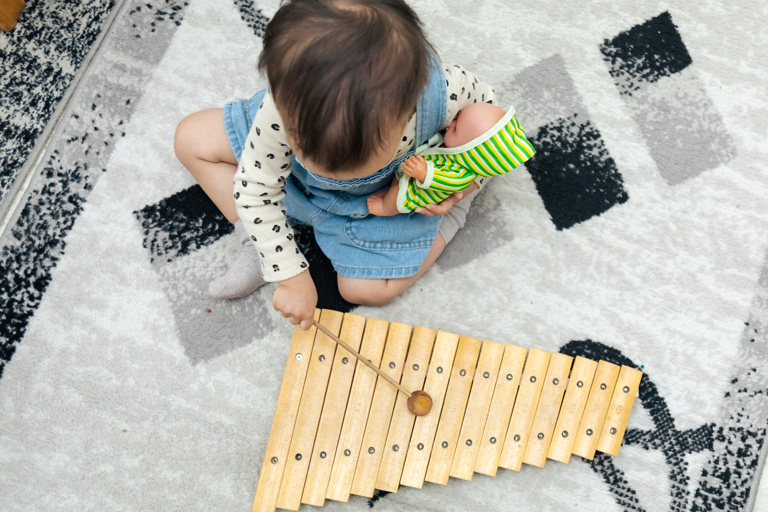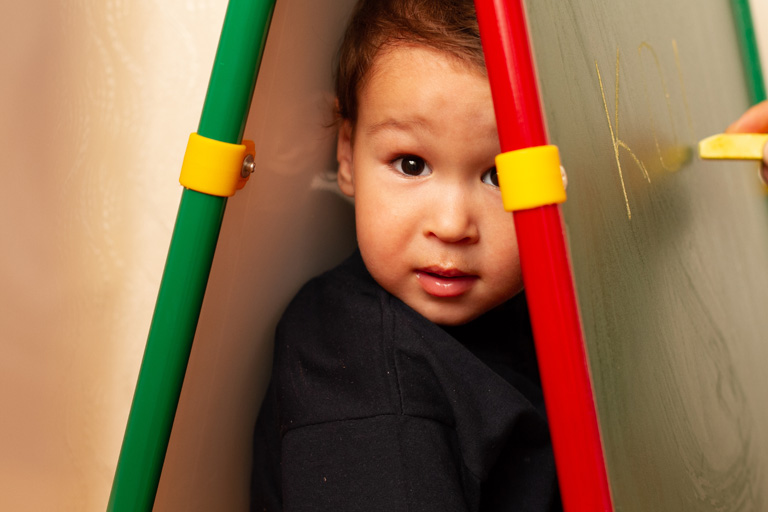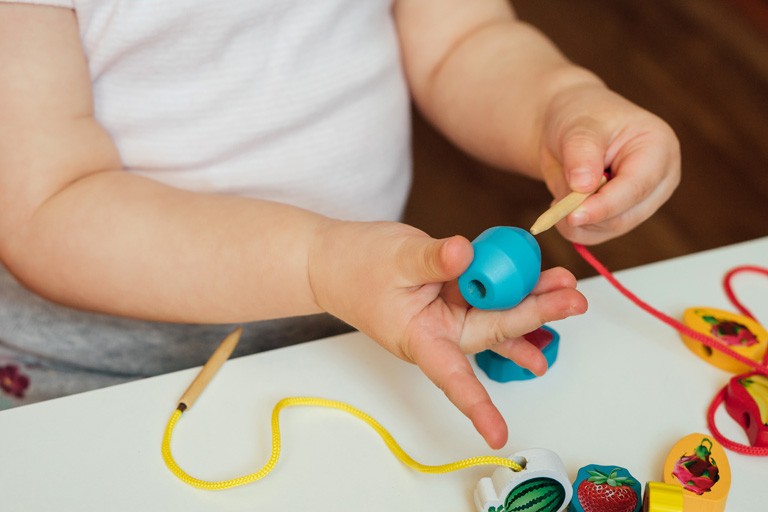5 Tips for Healthy Family Sleep Habits
July 13, 2016Joint Attention: What is it and Why is it Important?
August 8, 2016Did you know that listening and understanding language is known as receptive communication and that vocalizing/gesturing/speaking are known as expressive communication. Good listening and communication skills are crucial to young children’s success, so it pays to begin early with practicing some easy ways to enhance your little one’s speech and language skills. Here are 8 tips to get your child started on the right path to great receptive and expressive language skills.
- Reading-So many parents do not realize that reading from birth is IMPORTANT! Some parents believe that there is no point in reading to their child until their child can sit and attend or can speak and name pictures. This is far from the truth! Reading to a baby from birth fosters listening and attention skills and a love of books from an early age. Just because a child cannot yet talk, does not mean that his little brain is not absorbing every single word you say! Read early and read often! Make it a part of your daily routine from the start.
- Singing/Music-Just like reading, music and singing open up such an opportunity for listening and language learning. Many songs with sing with children involve gestures and even babies younger than 12 months can begin to imitate gestures! Gestural imitation skills are a very important pre-cursor to spoken language. When a baby points to something he sees and then looks at you, he is saying (without words) “Hey, look Dad, that’s my ball!” and when you acknowledge him with a verbal “Oh yes, I see your ball!” he is learning/hearing the words for what he was thinking. So, songs such as “Wheels on the Bus”, “Twinkle Twinkle Little Star” or “Old MacDonald Had a Farm” are great ways to work on gestural and sound imitation. Just as with reading, sing early and sing often!

- Choices-As parents we are usually pretty good at understanding our child’s needs or reading their non-verbal cues from an early age. So we tend to anticipate their needs. While this is crucial as infants, as children get a bit older, we need to stop and give them a chance to communicate those needs to us if want them to start using gestures and words. So, you can offer choices at snack time and play time to encourage a communicative gesture or word. “Emma, do you want water or milk in your cup?” If Emma points to water, you reinforce her by saying “Oh you want WATER in your cup” or your child may approximate a word and say “mook” for “milk”. Again, praise that attempt and say “You want MILK, nice job using your words!” Many parents tend to only ask yes/no questions such as “Do you want milk” or “Are you hungry?” While we certainly want kids to be able to accurately answer yes/no questions, many little ones will revert to just a head shake or a “no” (even if they mean yes) as a toddler and the yes/no question doesn’t given them quite the opportunity for communication as making a choice does.
- Fun/Silly/Animal/Environmental Sounds-Little ones love silly sounds and sometimes being goofy as an adult is the best way to work on communication and imitation of new sounds and words. If your child is only babbling, begin with the sounds she already knows such as “mamamama” and then sit face to face with her, or you can both sit in front of a mirror and babble “mamamama” right along with her, then change it up to “moomoomoo” or “mememe” and see if she makes attempts to repeat. Little ones should be making a large variety of consonant-vowel combinations in babbling before we can expect them to form those sounds into true words. Use animal sounds, car sounds, train sounds and other fun sounds that involve inflection. The sillier you are and the more inflection you use in your own voice. The more apt your child will be to try to repeat you.

- Drop the word “SAY”-Most parents try to encourage communication by incessantly saying to your child “Say ball”. “Say book”. Instead, simply drop that word “say” and model the word without it. When looking at a ball you can say “A BALL!”, “I see a BALL” or “Here is your CUP, it’s a BLUE CUP”. Modeling puts no pressure on your child to repeat a word he may not be able to repeat yet. But modeling, still teaches him the words. So model and label people, objects, what he is doing “You are digging in the sand”, and reserve “say juice” for when you already know he has the word “juice” firmly in his vocabulary and is just being stubborn.
- Hold objects near your face-It is important to bombard your child with as much information about speech as possible. So this means we want her to not only hear a word, but see your mouth, lips and tongue move as you form words. Little kids tend to be object driven and they only focus on the thing they want at that moment. So if your child is staring at his empty cup, you can bring the cup near your face to engage her eye contact and then ask “Do you want milk or juice in your cup?”. That way she is seeing and she is hearing what you say.
- Build in gestures-If your child has limited words, you can build in some simple signs to help your child lessen frustration and get his needs met by using a gesture for a word that he may not be able to say verbally yet. Babies as young as 7 months have been taught signs, such as “eat”, “drink”, “hat”, “more”, “play”. Pairing a gesture with a word gives children another cue for learning that word and using signs combined with words has only been shown to enhance communication, not hinder it. We call this the total communication approach to language and you can Google studies on the use of sign language with children and also find signs for almost anything you desire online. There are also baby sign apps for your phone.
- Following Simple Commands/Directions-For young children, place items that are very familiar in front of them (a choice of only 2 items is a good place to start), such as their bottle and their blanket and ask “Where is your bottle?”. Give them a bit of time to process what you just asked and if they don’t respond, ask again. If they still don’t respond, help them by pointing or touching the bottle and saying “Here is your BOTTLE!”. Practice this with familiar people and/or pets as well, for example, “Go see Daddy” or “Where is Frisky”, again give them time to process the question and if they don’t respond, help by pointing or showing “Look, there is Daddy, let’s go get him”. As children begin to associate more words with familiar objects and people you can make your requests a bit harder such as “Put the ball in the bucket” or “Throw the tissue in the garbage”.
If you have concerns about your child’s ability to communicate verbally or his ability to follow simple commands or directions you can call Early Intervention for a speech evaluation.

 Send to a friend!
Send to a friend!


